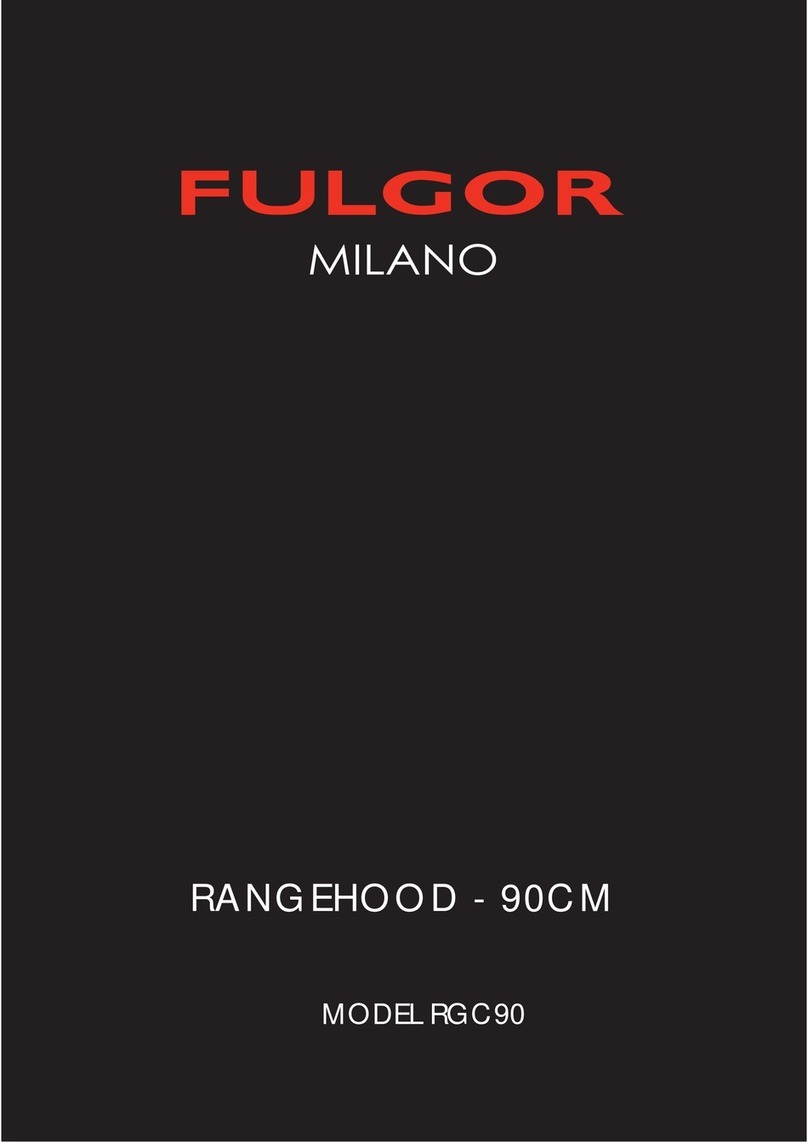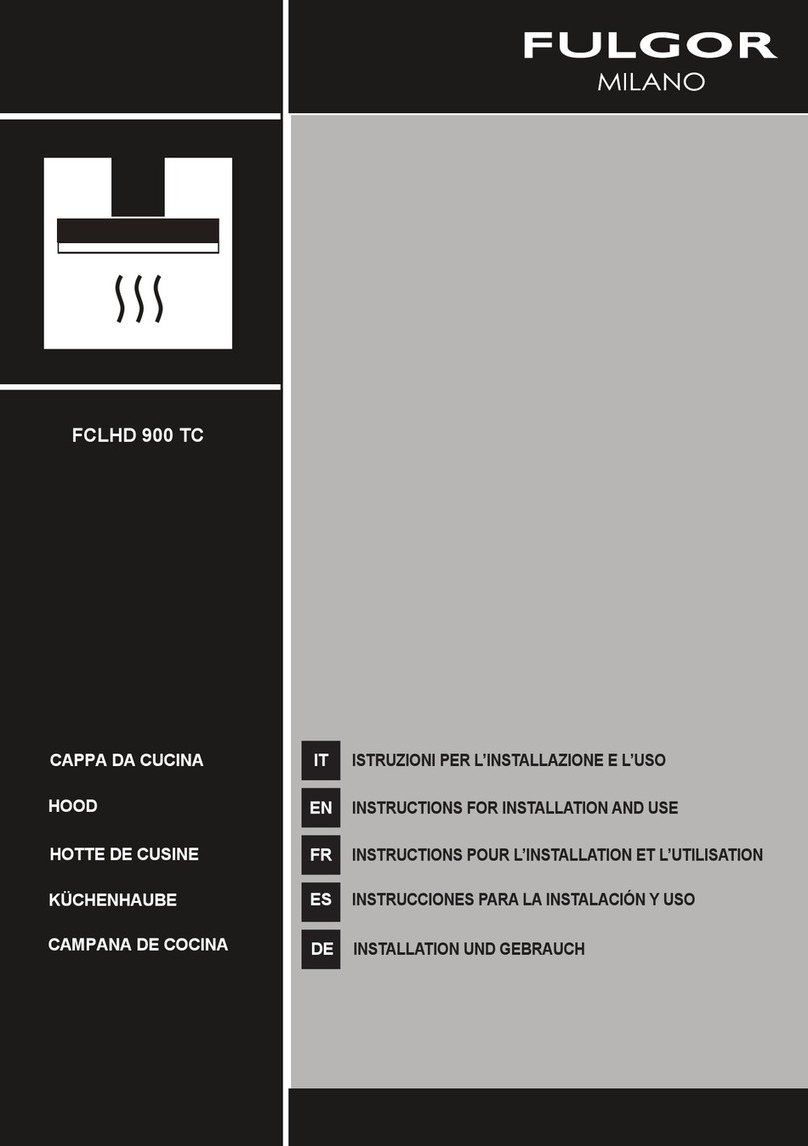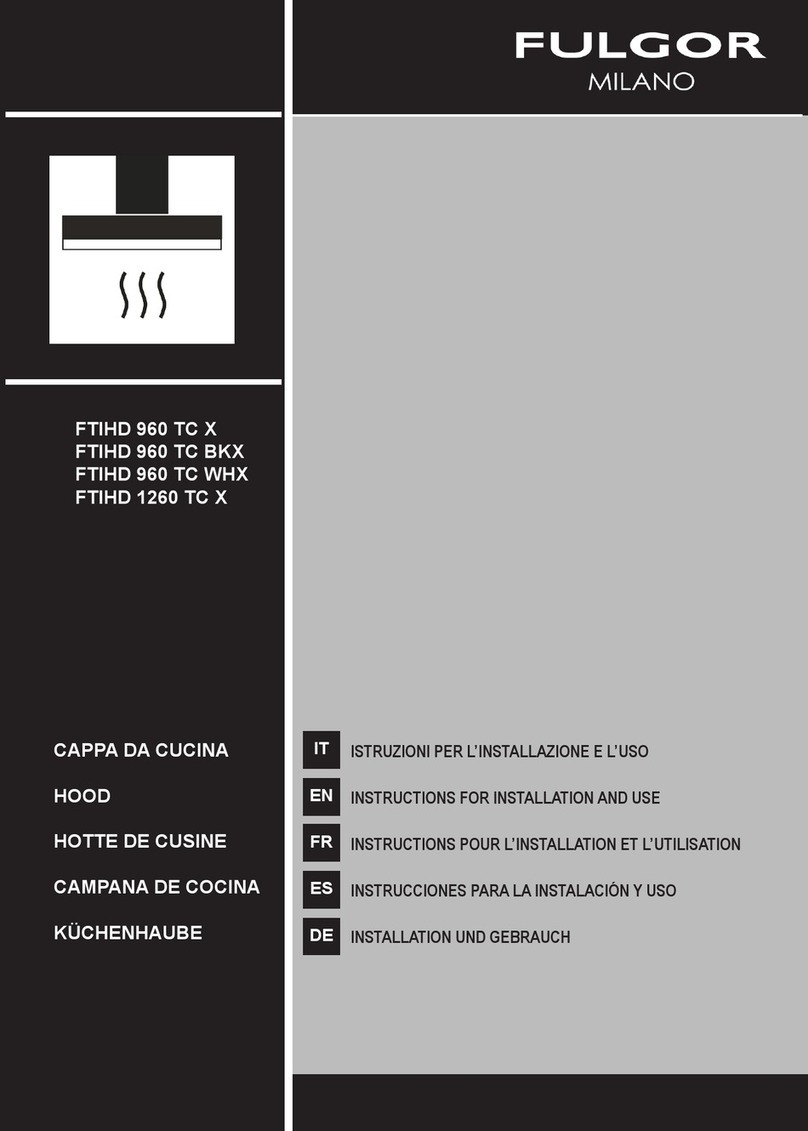
Il simbolo sul prodotto o sulla confezione indica che il prodotto non deve essere considerato
come un normale riuto domestico, ma deve essere portato nel punto di raccolta appro-
priato per il riciclaggio di apparecchiature elettriche ed elettroniche. Provvedendo a smal-
tire questo prodotto in modo appropriato, si contribuisce a evitare potenziali conseguenze
negative per l’ambiente e per la salute, che potrebbero derivare da uno smaltimento ina-
deguato del prodotto. Per informazioni più dettagliate sul riciclaggio di questo prodotto,
contattare l’ufcio comunale, il servizio locale di smaltimento riuti o il negozio in cui è sta-
to acquistato il prodotto. Questo elettrodomestico è marcato conformemente alla Diretti-
va Europea 2012/19/EC sui riuti da apparecchiature elettriche ed elettroniche (WEEE).
IT
The symbol on the product or on its packaging indicates that this product may not be
treated as household waste. Instead it shall be handed over to the applicable collec-
tion point for the recycling of electrical and electronic equipment. By ensuring this pro-
duct is disposed of correctly, you will help prevent potential negative consequences for
the environment and human health, which could otherwise be caused by inappropriate
waste handling of this product. For more detailed information about recycling of this pro-
duct, please contact your local city ofce, your household waste disposal service or the
shop where you purchased the product. This appliance is marked according to the Eu-
ropean directive 2012/19/EC on waste electrical and electronic equipment (WEEE).
GB
Le symbole sur le produit ou son emballage indique que ce produit ne peut être traité comme
déchet ménager. Il doit plutôt être remis au point de ramassage concerné, se chargeant du re-
cyclage du matériel électrique et électronique. En vous assurant que ce produit est éliminé cor-
rectement, vous favorisez la prévention des conséquences négatives pour l’environnement et
la santé humaine qui, sinon, seraient le résultat d’un traitement inapproprié des déchets de ce
produit. Pour obtenir plus de détails sur le recyclage de ce produit, veuillez prendre contact avec
le bureau municipal de votre région, votre service d’élimination des déchets ménagers ou le ma-
gasin où vous avez acheté le produit. Cet appareil est commercialisé en accord avec la directive
européenne 2012/19/EC sur les dèchets del équipments èlectriques et èlctroniques (WEEE).
F
El símbolo en el producto o en su embalaje indica que este producto no se puede tratar como
desperdicios normales del hogar. Este producto se debe entregar al punto de recolección de
equipos eléctricos y electrónicos para reciclaje. Al asegurarse de que este producto se dese-
che correctamente, usted ayudará a evitar posibles consecuencias negativas para el ambien-
te y la salud pública, lo cual podría ocurrir si este producto no se manipula de forma adecua-
da. Para obtener información más detallada sobre el reciclaje de este producto, póngase en
contacto con la administración de su ciudad, con su servicio de desechos del hogar o con la
tienda donde compró el producto. Este electrodomestico està marcado conforme a la direc-
tiva Europea 2012/19/EC sobre los residuos de aparatos elèctricos y electrònicos (WEEE).
E
Das Symbol auf dem Produkt oder seiner Verpackung weist darauf hin, dass dieses Pro-
dukt nicht als normaler Haushaltsabfall zu behandeln ist, sondern an einem Sammel-
punkt für das Recycling von elektrischen und elektronischen Geräten abgegeben wer-
den muss. Durch Ihren Beitrag zum korrekten Entsorgen dieses Produkts schützen Sie
die Umwelt und die Gesundheit Ihrer Mitmenschen. Umwelt und Gesundheit werden
durch falsches Entsorgen gefährdet. Weitere Informationen über das Recycling die-
ses Produkts erhalten Sie von Ihrem Rathaus, Ihrer Müllabfuhr oder dem Geschäft, in
dem Sie das Produkt gekauft haben. Dieses Elektrohaushaltsgerät ist entsprechend
der EU-Richtlinie 2012/19/EC Über Elektro- und Elektronik – Altgeräte (WEEE).
D
3
































